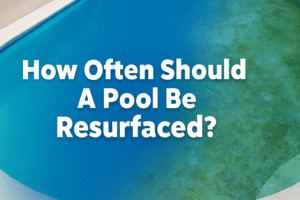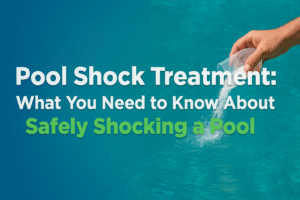Is your pool turning into a green swamp or developing stubborn dark spots? This comprehensive guide will equip you with the knowledge to identify green, black, yellow, and pink algae by their appearance and location. You’ll learn how to balance water chemistry, apply targeted treatments, leverage the right equipment, and understand when it’s time to call in the experts.
What Are the Different Types of Pool Algae and How Can You Identify Them?
Pool algae are microscopic, plant-like organisms that thrive in warm, unbalanced water, often forming visible blooms or slimy films. Recognizing each type by its distinct color, texture, and resistance to chlorine is the crucial first step in selecting the most effective eradication method. Understanding these characteristics ensures a precise treatment strategy before minor issues escalate into widespread problems.
| Type | Color | Common Location | Chlorine Resistance |
|---|---|---|---|
| Green Algae | Bright green | Free-floating water | Low |
| Black Algae | Dark green/black | Plaster walls | High |
| Mustard Algae | Yellow/brown | Shady walls & steps | Medium |
| Pink Slime | Pink/red | Corners and fittings | Bacterial (N/A) |
Spotting these traits ensures precise treatment before blooms spread and become more challenging to manage.
How to Recognize Green Algae in Your Pool
Green algae typically manifest as cloudy water and can form fuzzy green patches on pool walls or steps. This common type flourishes when the free chlorine level dips below 2 parts per million (ppm) and water circulation is inadequate, quickly transforming clear water into a murky, uninviting swimming environment within a matter of days. Its presence is often the first sign of an imbalance in your pool’s ecosystem.
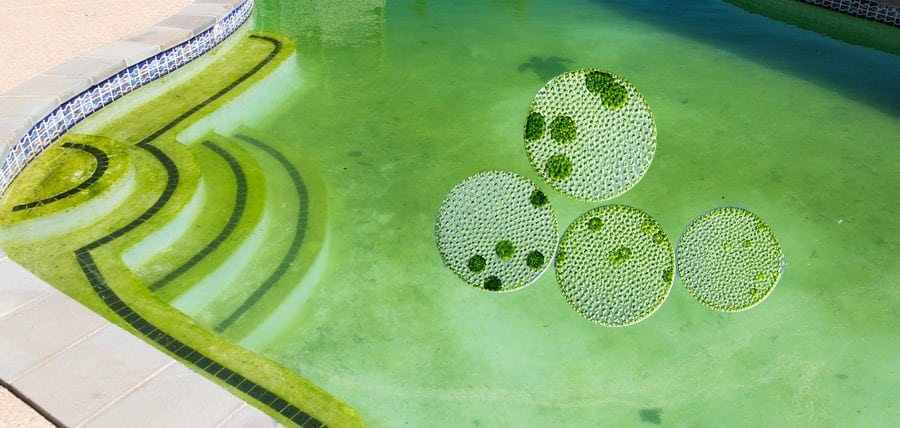
What Are the Signs of Black Algae and How Is It Different?
Black algae present as small, dark, pepper-like spots that appear to be embedded in plaster or concrete surfaces. Upon closer inspection, you’ll notice they have slimy roots anchoring them firmly. This type of algae is significantly more resistant to chlorine than free-floating green algae due to a protective outer sheath that shields it from chemical treatments. Its stubborn nature requires a more aggressive approach for removal.
Distinguishing black algae in pool from simple stains or mold is crucial for effective treatment. Black algae spots are typically raised and feel slimy to the touch, indicating living organisms. Pool stains, on the other hand, are flat discolorations of the pool surface, and mold, while potentially discolored, lacks the characteristic slimy residue and root-like structure of algae. A good test is to scrub the spot; if a residue or live algae comes off, it’s likely algae.
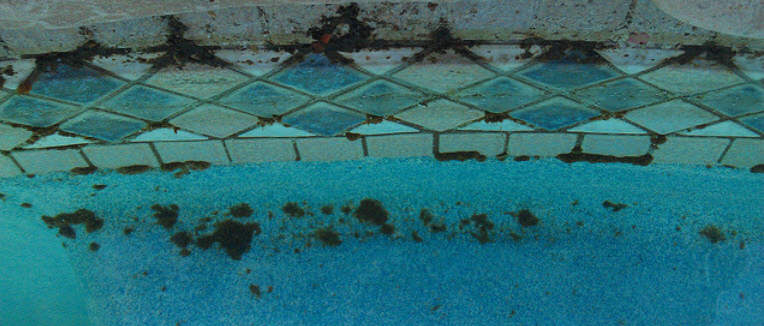
How to Spot Yellow or Mustard Algae on Pool Surfaces
Mustard algae, also known as yellow algae, typically forms granular, powdery patches of a yellow or brownish hue, often appearing in shaded corners and shallow areas of the pool. It has a notable tolerance for normal chlorine levels, making it persistent and prone to recurrence if not treated with specialized algaecides. Its presence can make pool surfaces feel gritty.
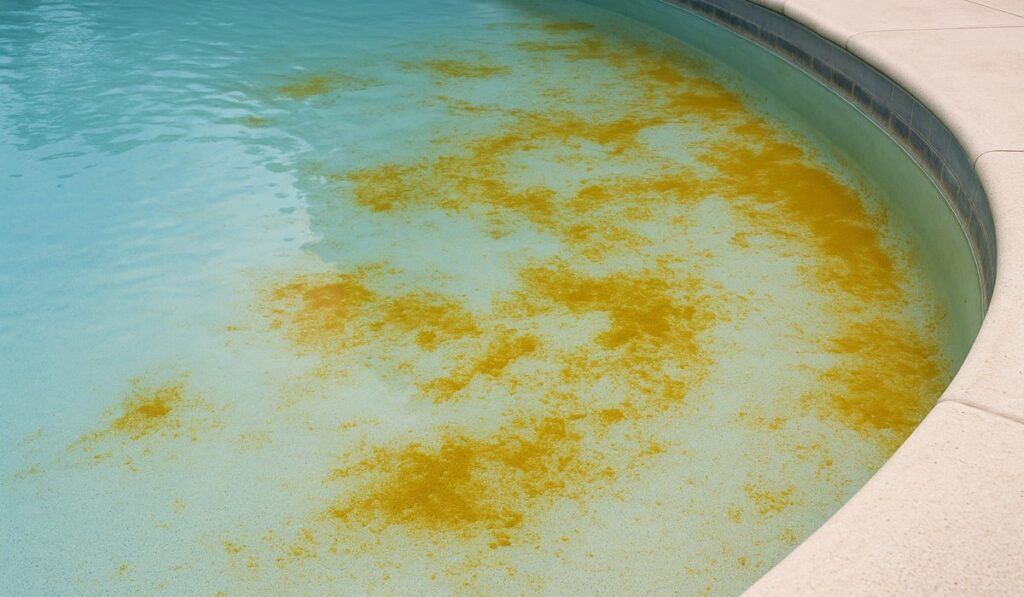
What Is Pink Slime in Pools and How to Identify It?
Often mistaken for algae, pink slime is actually a bacterial biofilm that appears as slimy pink or reddish streaks, commonly found along the waterline and on pool equipment like ladders and fittings. It thrives in environments where oils and organic matter accumulate and often coexists with other contaminants. Unlike true algae, it requires a non-chlorine biocide for effective eradication rather than a standard algaecide.
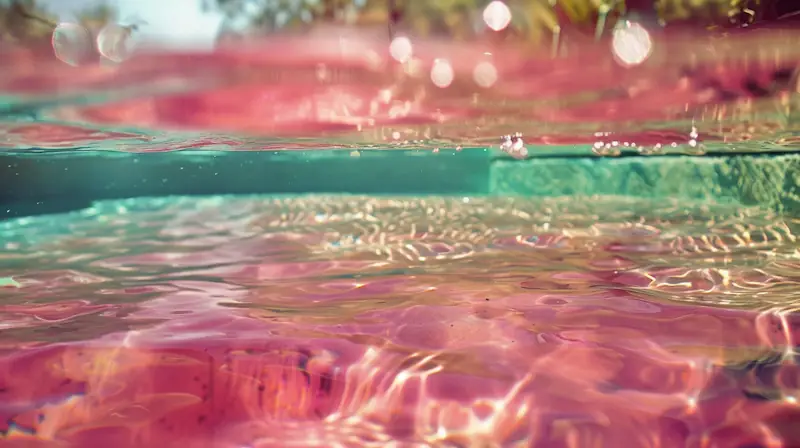
How Do Pool Chemistry Factors Affect Algae Growth and Prevention?
Maintaining balanced pool chemistry is fundamental to preventing and eliminating algae growth. By starving algae of essential nutrients and ensuring chlorine remains active and effective, you create an environment inhospitable to these unwanted organisms. Proper management of sanitizer levels, pH, alkalinity, phosphates, and stabilizer usage works synergistically to prevent blooms and maintain clear, healthy water.
How to Prevent & Get Rid of Pool Algae
Algae thrive in pools with unbalanced chemical and pH levels. Checking chemical levels at least every few days and ensuring proper filtration are crucial for prevention, but high amounts of chlorine is a quick solution to kill algae in a pool, therefore shocking the pool can be an effective method to kill algae.
Chlorine is the primary sanitizer in swimming pools and plays a vital role in killing algae by oxidizing their cell walls and sanitizing the water. Maintaining a consistent free chlorine level between 2–4 ppm is essential for preventing both green and mustard algae from establishing a foothold. When chlorine levels are adequate, it effectively neutralizes algae spores before they can multiply and cause visible blooms.
How Does pH and Alkalinity Impact Algae Development?
The pH and alkalinity levels of your pool water significantly impact chlorine’s effectiveness and, consequently, algae development. An ideal pH range of 7.4–7.6 and an alkalinity level between 80–120 ppm maximize the sanitizer’s potency. When these levels fall outside the recommended ranges, chlorine becomes less effective, creating an environment where algae can easily take hold and flourish.
Why Are Phosphates Important in Pool Algae Control?
Phosphates act as a primary food source for algae, essentially fertilizing them and accelerating their growth. By using a phosphate remover, you effectively cut off this essential nutrient supply, significantly slowing down bloom development and enhancing the performance of your chlorine sanitizer. Regularly testing and managing phosphate levels is a proactive step in algae prevention.
How Does Cyanuric Acid Influence Chlorine Effectiveness?
Cyanuric acid, often referred to as a chlorine stabilizer, plays a crucial role in protecting chlorine from degradation caused by the sun’s ultraviolet (UV) rays. When maintained at an appropriate level, typically between 30–50 ppm, cyanuric acid ensures that the chlorine in your pool remains active and effective for longer periods, especially in outdoor pools. This extended contact time significantly improves the pool’s ability to kill algae and other contaminants.
What Are the Most Effective Methods to Kill Each Type of Pool Algae?
Effectively combating pool algae requires a multi-faceted approach, especially in warm climates like South Florida where algae growth is rampant. Combining physical removal techniques, targeted shock treatments, and appropriate algaecide applications is key to clearing existing algae blooms quickly and preventing their recurrence. A consistent maintenance routine that addresses both chemical and physical aspects will ensure your pool remains crystal clear.
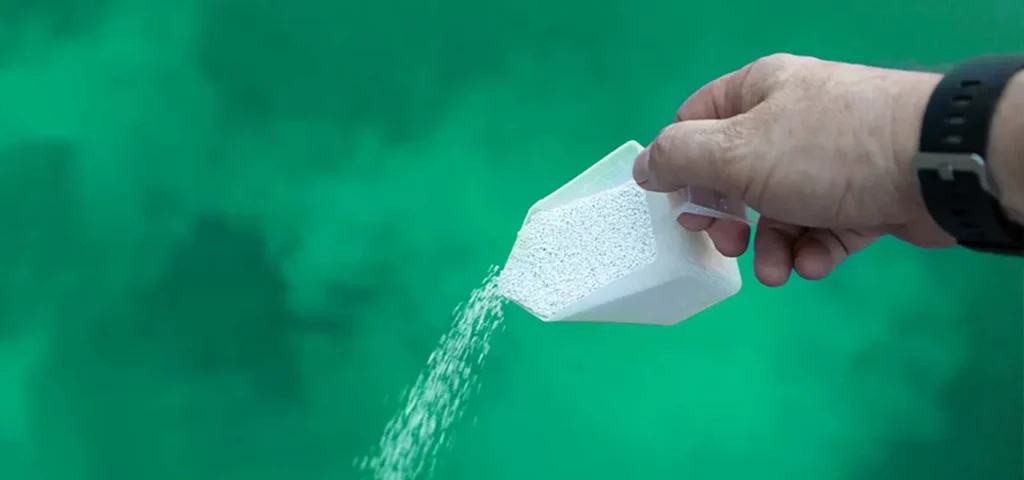
How to Kill Green Pool Algae Fast: Shock and Algaecide Treatments
To rapidly eliminate green algae, begin by shocking the pool to raise the chlorine level to 10–15 ppm. It’s crucial to brush all pool surfaces thoroughly before and after the shocking process to dislodge algae. After shocking, run the pool filter continuously for at least eight hours to remove suspended algae. Finally, dose the pool with a clarifying algaecide to capture any remaining fine spores and ensure the water returns to clarity.
What Is the Best Approach for Black Algae Removal from Concrete Pools?
Black algae requires a robust treatment strategy due to its tenacious nature. Start by applying a high-strength algaecide directly to the affected black patches. Follow this by scrubbing the spots vigorously with a stainless-steel brush to break through the protective layer. Subsequently, perform a triple shock treatment, which involves adding three times the normal amount of pool shock. After these steps, run the filter continuously until the water clears and backwash it thoroughly to remove dislodged algae roots.
Black algae growth is stubborn because it has deep roots that anchor into porous surfaces and a protective outer layer that resists normal cleaning. The fastest way to get rid of black algae in pool is to: Brush aggressively with a stiff nylon or wire brush to strip away its protective surface.
How to Treat Mustard Algae with the Best Algaecide Options
Treating mustard algae involves using a phosphate-free algaecide at the recommended dosage. After applying the algaecide, brush the affected mustard spots with a nylon brush to help break them down. Mustard algae is also chlorine-resistant, so a normal dose of pool shock won’t have much effect on it. Therefore, you’re going to shock your pool three times. It’s essential to maintain elevated chlorine levels in the pool for at least 48 hours following treatment to ensure the complete eradication of this chlorine-resistant algae type.
Eliminating Pink Slime and Bacterial Growth in Pools
To eliminate pink slime, which is bacterial in nature, use a non-chlorine biocide specifically formulated for bacterial biofilm. After applying the biocide, scrub all affected surfaces, paying close attention to fittings and corners. Maintaining a strict and consistent sanitizer schedule is crucial to prevent its reformation, as bacteria can quickly repopulate if conditions become favorable again.
When and How to Use Pool Shock for Algae Removal
It’s advisable to shock your pool immediately upon noticing any signs of algae growth or following significant events like heavy rainfall, which can introduce contaminants. To properly shock your pool, accurately calculate the required dosage based on your pool’s volume. Distribute the shock granules evenly across the water’s surface, and ensure the pump and filter system run continuously until the water clears. Brushing pool surfaces during this process helps dislodge any remaining algae.
How Does Pool Equipment Help Prevent and Remove Algae?
Your pool’s equipment plays a vital role in both preventing algae growth and physically removing it from the water and surfaces. Proper circulation ensures that sanitized water reaches all areas of the pool, while effective filtration captures algae spores and debris. Regular scrubbing and consistent maintenance of your equipment reinforce chemical treatments by physically removing algae before it can establish itself and multiply.
Always keep your pool equipment working 100% efficiently, if you’re out of luck and need to repair and replace any vital equipment, check out our Pool Equipment Repair Services and feel free to reach out if needed!
How Do Pool Filters and Pumps Aid in Algae Removal?
Pool filters are designed to capture microscopic algae spores, dead algae, and other organic debris, effectively removing them from the water. The pool pump is essential for circulating the water, ensuring that it passes through the filter and that sanitized water is distributed throughout the pool. Running your filtration system for an adequate duration each day, typically 8–12 hours, is crucial for preventing water stagnation and stopping algae spores from settling on surfaces.
Why Is Brushing Essential for Removing Algae from Pool Surfaces?
Regular brushing of your pool’s walls, steps, and floor is a critical preventative measure against algae. This action dislodges thin layers of algae before they have a chance to root deeply and become difficult to remove. Consistent weekly brushing can prevent the formation of stubborn blooms, keeping your pool surfaces clean and reducing the workload for your chemical treatments.
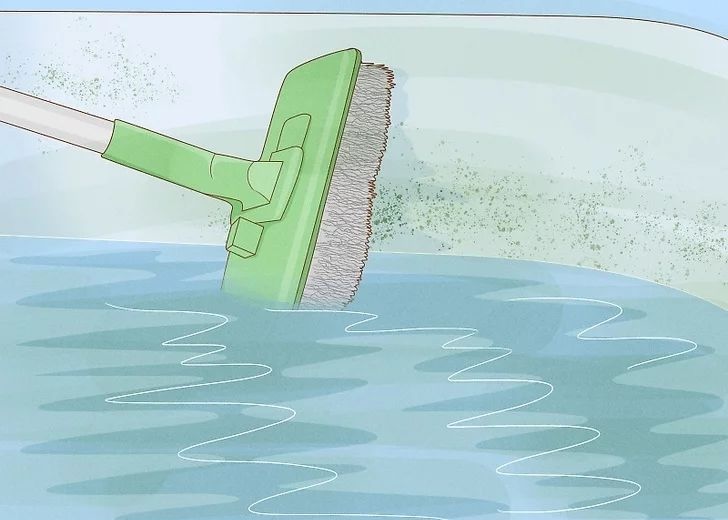
How to Use Pool Vacuums to Clear Settled Algae and Debris
Pool vacuums are indispensable tools for removing settled algae, dead organic matter, and other debris from the pool floor. By vacuuming regularly, you physically remove these contaminants, preventing them from decomposing and contributing to water quality issues. It is essential to backwash or clean your pool filter immediately after vacuuming to prevent the recirculation of any dislodged algae spores back into the pool water.
How Often Should You Clean Pool Equipment to Prevent Algae?
Consistent maintenance of your pool equipment is vital for preventing algae. It is recommended to clean your pool filters monthly, inspect your pool pump weekly for any signs of wear or obstruction, and replace filter cartridges or media annually. This routine upkeep ensures that your equipment operates at peak efficiency, maintaining optimal water flow and effectively removing algae spores and debris.
When Should You Call a Professional for Pool Algae Removal in South Florida?
While many algae issues can be managed with DIY methods, certain situations warrant the expertise of a professional pool service. Stubborn algae blooms that resist repeated treatment, rapid regrowth after initial fixes, or complex problems with your pool’s filtration or circulation system are all indicators that professional intervention is needed. Experts can diagnose underlying issues and implement solutions to guarantee lasting clarity and a healthy swimming environment.
What Are the Signs That DIY Algae Treatment Isn’t Enough?
If you find that algae are reappearing within 48 hours of treatment, your pool water remains persistently cloudy despite maintaining proper chemical balance, or stubborn black spots continue to resist your scrubbing efforts, it’s a clear sign that your DIY approach may not be sufficient. These persistent issues often indicate a deeper problem that requires specialized knowledge and equipment to resolve effectively.
How Can Professional Services Ensure Long-Term Algae Prevention?
Professional pool services offer a significant advantage in long-term algae prevention. Experts possess the tools and knowledge to precisely calibrate your pool’s chemical balance, perform thorough deep cleanings of equipment that might be overlooked in routine maintenance, and develop custom maintenance plans specifically tailored to the unique challenges of your local climate, such as the high humidity and heat in South Florida.
Don’t let algae infestations disrupt your swimming season. Our team of experienced professionals provides fast, reliable algae removal and comprehensive maintenance services, all customized to the specific needs of pools in the South Florida climate. We ensure your pool is always ready for enjoyment.
What Are Typical Costs for Professional Pool Algae Removal in South Florida?
The cost for professional pool algae removal in South Florida can vary. A one-time algae treatment typically ranges from $150 to $450, depending on the severity of the bloom and the size of the pool. For ongoing pool maintenance that includes preventative algae control, plans generally start from $95 per month. For more service information, please visit our Pool Maintenance and Cleaning Services page.
How to Schedule Expert Pool Cleaning and Algae Treatment with Near Me Pools
Achieving and maintaining a crystal-clear pool throughout the year is simple with Near Me Pools. If you’re ready for a hassle-free solution to algae problems and expert pool care, contact us directly. You can schedule your fast, reliable algae removal and maintenance services by reaching out to us directly at (954) 478-8783. To learn more about our company and our commitment to excellence, check out our About Us section!



